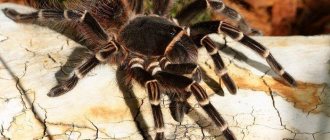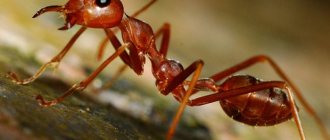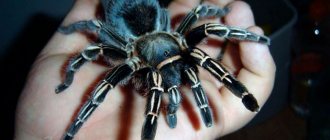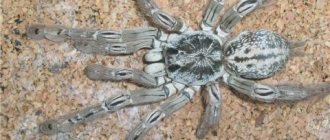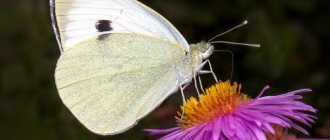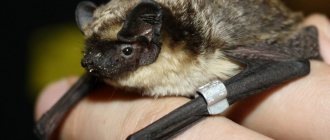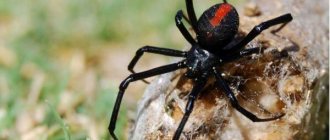Rules for keeping tarantula spiders at home
As mentioned above, spiders are found in regions with hot climates.
This must be taken into account when keeping individuals at home. Among the most important points that you should pay attention to when placing an animal are the following:
- The pet must move freely around its home, so it needs to choose a spacious container.
- Tarantula spiders love warmth, but bright sunlight harms them. Place your pet in a warm and dark place in the house, and do not forget about the humidity of the room.
- It is necessary to monitor the behavior of individuals; outbreaks of aggression between young and adult pets often occur. Throughout life, there are several key moments, which include periods of reproduction and the emergence of the younger generation. To avoid cannibalism, adult pets should be transplanted from young animals in a timely manner.
- The animal often sheds and pollutes its home; it is necessary to periodically clean the terrarium, as well as change the soil to maintain optimal living conditions.
What should a spider's home be like?
Animals may experience stress when moving from their natural habitat, so choosing a new home is key when it comes to pet placement.
When choosing a habitat, pay attention to the following parameters:
- A terrarium or aquarium is perfect for creating an artificial habitat, and there should be enough space for your pet. It is necessary to take into account the size of the individual and take a terrarium with a wall that is twice the length of the animal’s body.
- For underground species, soil at the bottom of the container is suitable; its thickness should be at least 5 cm, and soft and hard layers of soil can be combined. For those individuals that lead a terrestrial lifestyle, you will have to additionally install a snag or a small log in the aquarium. Spiders will crawl along this snag and also weave webs on it.
- An equally important issue is maintaining climatic conditions. The pet's habitat should be warm, the temperature should not be lower than 25 °C. But at the same time, it is better to hide the aquarium from direct exposure to sunlight.
Nutrition
The tarantula spider at home feeds on beetles, cockroaches, earthworms and beetle larvae. Feeding insects are specially grown to feed arthropods. Young animals are given zofobas or darkling beetle larvae; They are popularly called mealworms.
The length of the larva should correspond to 1/3 of the size of the abdomen. If after feeding it does not increase in size, then the individuals are given more food. A sign that the tarantula has eaten is an enlarged abdomen. After molting, adult spiders are given the same soft food as young ones.
At home, the tarantula is fed with darkling beetle, zofobas, Madagascar, Argentine, and Turkmen cockroaches. He can catch a cricket, a grasshopper, a locust, a small lizard. Animals love to hunt them. Insects are placed in a terrarium alive. The remaining feed is removed so that it does not rot.
Care for tarantula spiders is minimal
It is important for them to provide warmth, moist air and soil, and good ventilation. Feeding is carried out once a week
The young are given food every 3 days.
It is recommended to clean the bedding from feces and food residues. To do this, the tarantula is moved to another container. The soil is heated in a frying pan
Handle an animal with great care
Cleaning and cleaning, hygiene
Correct and high-quality soil poured into the terrarium is very important. Good soil helps maintain optimal moisture levels. You can choose the soil yourself quite easily. Such a substrate must have good air permeability. Among other things, the soil must be as clean as possible to prevent the development of putrefactive microflora and mold. The optimal substrate is one with sufficient moisture content, but not too fine.
To make the substrate sufficiently moist, it is necessary to regularly wet the soil with clean water at room temperature. Excessive waterlogging and insufficient soil moisture inside the terrarium are unacceptable, and often become the main cause of death or death of a pet. Hygienic cleaning of the walls and bottom of the terrarium should be carried out as it gets dirty. It is also possible to partially replace the substrate.
Why you can’t feed the tarantula spider insects from the street:
Insects from the street are subject to various risk factors, such as food poisoning, poisoning with toxins, and other harmful substances. There is also a high risk of infection by various parasites. For example, I saw a video in which about 20-30 parasitic worms were taken out of a grasshopper caught on the street with tweezers, which can also infect your tarantula spider.
If for some reason you decide to feed the tarantula spider insects from the street, then try to collect insects away from the city and roads. Also carefully examine the caught insect for the presence of visible parasites, and rinse with water. A small quarantine would not hurt to identify possible diseases of the caught insect.
Answers to popular questions
Keeping spiders at home is accompanied by various emergency situations that require immediate resolution. Let's look at a few typical problems and methods for eliminating them:
Is it possible to pick up spiders? A spider cannot be called a full-fledged tame animal. Therefore, any attempts to tame or “train” a pet are initially doomed to failure. Many people wonder whether it is possible to pick up a pet. The answer is ambiguous because predicting the likelihood of a spider's behavior is difficult. A change in temperature, humidity level or amount of light can negatively affect arthropods. The result of such taming can be different: the spider will run away, bite, get scared, or even die soon.
What to do if you are bitten by spiders? Often, house spider bites do not pose a danger to humans. The exception is people with a tendency to develop an allergic reaction. In case of acute attacks of allergies and the lack of timely medical care, anaphylactic shock and even death are possible.
Typically, a house spider bite is accompanied by a slight burning sensation, itching, redness or swelling at the site of the lesion. To protect yourself from negative consequences, you need to apply a tourniquet above the bite site. The wound should be washed with water and soap and treated with any antiseptic. It is advisable to take an antihistamine. Don’t forget to drink plenty of fluids to prevent intoxication of the body.
What to do if a spider “escapes” from the terrarium? Most often, the spider leaves its home when the seal of the terrarium is broken. Also, a pet’s “escape” is possible in a stressful situation, after molting or a feeding disorder. First, it is necessary to determine the current location of the “fugitive”, only then - to carry out measures to return him to the terrarium. So, having found a spider in the room, cover the “fugitive” with a wide container. Now carefully slide a sheet of thick cardboard under the arthropod. Lift and carefully carry the structure, move the spider into the terrarium, and close the container tightly.
How long do house spiders live? The lifespan of a spider depends on compliance with the conditions of detention, proper care and feeding. This factor is also influenced by the species characteristics of the animal. For example, tarantulas, popular among spider breeders, can live 15-20 years, goliaths - 6-9 years, peacock spiders - about 9-10 months. Tarantulas, which are also actively bred at home, live in captivity from 1 year to 30 years. Life expectancy depends on the breed. In addition, females live significantly longer than males.
As it turns out, not only cats, dogs or aquarium fish can become pets. Spider is a great alternative! However, this type of pet requires more attention from humans. The recommendations, tips and rules presented in our article will help you properly organize the maintenance, feeding and care of your exotic “family member”.
How to deal with a tarantula spider
Do you adore it so much that you pick it up? Be sure to wash them after such “communication.” Do not lean too low over the terrarium as you may be suddenly attacked. House spiders of this type are insidious and unpredictable.
When cleaning the spider's habitat, use gloves and tweezers. Preferably long. This is not the time to relax when cleaning your terrarium and leave it unattended. The tarantula spider can take advantage of your absent-mindedness and break free. If there is a cat, dog or hamster in the house, such a party will result in the sudden death of the pets.
Tarantula spiders cannot be tamed. They are ready to bite even an attentive and loving owner, it is enough for them to imagine even a shadow of danger. Even the calmest house spiders of this breed are not safe.
Differences in webs by spider species
Depending on the species, spiders can weave different webs, which are a kind of “calling card” of the arthropod.
Round web
This version of the web looks incredibly beautiful, but is a deadly design. As a rule, a round web is suspended in a vertical position and has part of the adhesive threads, which does not allow the insect to escape from it. Weaving such a network is carried out in a certain sequence. At the first stage, the outer frame is made, after which radial fibers are laid from the central part to the edges. Spiral threads are woven at the very end.
Information about the presence of prey in such a trap comes to the “hunter” through specially woven signal threads. The appearance of any breaks in such a web forces the spider to weave a new web. Old webs are usually eaten by arthropods.
Strong web
This type of web is characteristic of nephilous spiders, which are widespread in Southeast Asia. The trapping nets they build often reach a couple of meters in diameter, and their strength allows them to easily support the weight of an adult.
Such spiders catch in their strong web not only ordinary insects, but also some small birds. Research results show that spiders of this type can produce about three hundred meters of spider silk daily.
Spider web hammock
Small, round “coin spiders” weave one of the most complex web designs. These arthropods weave flat webs on which the spider sits and waits for its prey. Special vertical threads extend up and down from the main network, which are attached to nearby vegetation. Any flying insects quickly become entangled in the vertically woven threads, after which they fall onto the flat hammock web.
Antidote
The most effective drug was considered to be antikarakurt serum produced by the Tashkent Bacteriological Institute. Good results were obtained with the administration (intravenous) of calcium chloride, novocaine and magnesium hydrogen sulfate.
If the person bitten is away from the medical center, it is recommended to cauterize the affected area with a lit match head within the first two minutes. It is believed that the poison, which does not have time to penetrate deeply, is destroyed by exposure to high temperature.
The karakurt spider is especially dangerous for small children. If help is late, the child cannot be saved.
Animals die from close “contacts” with the black widow, among which camels and horses are considered the most vulnerable.
How to get rid of spiders in the house
Is it possible to get rid of arachnids forever? Probably, it is unlikely until conditions in the home are created that are not acceptable for the life of spiders. The main thing is to deprive them of food, given the fact that spiders are not interested in the remains of human food, like some pests included in the diet of spiders. Therefore, one conclusion suggests itself - this is to deprive spiders of their food base, the list of which is very impressive, ranging from cockroaches to bedbugs and other parasites.
What should be done:
- Get rid of cracks in windows, doors, floors, etc.
- Clear both residential and non-residential premises of unnecessary things. Spiders love unkempt places.
- Install fine-mesh grilles on ventilation systems.
- Constantly carry out wet cleaning in your home, removing cobwebs.
- Do not ignore hard-to-reach places under sinks, under furniture, behind cabinets, etc.
- Clean the unglazed balcony and clean the porch area.
- Rid spiders of their food by destroying cockroaches, midges, mosquitoes, flies and other parasites.
- Cleanliness, order, and the absence of unnecessary things are the key to successful actions to get rid of unnecessary neighborhood in the house.
NO MORE SPIDERS IN THE HOUSE!! This trick is too easy not to know Watch this video on YouTube
Ways to fight spiders
- The use of sticky tape traps, similar to catching flies and mosquitoes. The tapes are laid horizontally where spiders like to appear.
- Using a vacuum cleaner and a damp cloth.
- Spiders cannot tolerate strong odors. Walnuts or horse chestnuts, which are placed in problem areas, are suitable for this.
- The same effect is caused by essential oils of mint, tea tree, eucalyptus, etc. To do this, you need to take half a liter of water and dissolve 20 drops of any oil in it. After thorough mixing, the active product is poured into a spray bottle and sprayed around the apartment, especially in hard-to-reach places.
Features of choosing a pet
In order to choose a healthy spider, you need to use a few simple tricks that will help protect yourself from wasting money:
the arthropod must be active and playful
In the case when the specimen you have chosen lies alone on the sidelines, is passive and constantly hides in the house, the animal is most likely sick, and you should not buy such a pet for home;
a healthy spider's abdomen should be even and smooth. If the abdomen is wrinkled or has other pathologies, the spider suffers from dehydration and may soon die; open wounds or ulcerative defects on the body of a tarantula are another reason to refuse to purchase such a spider;
It is best to purchase small spiderlings, since it is almost impossible to determine the age of a tarantula by appearance;
It is important to pay attention to the hairs that cover the abdomen. If they are not evenly distributed throughout the body or vary in size, the animal has health problems;
the absence of paws in most cases is not a pathology, since they will instantly grow back after the next molt. This only means that the animal was not transported properly.
Important! When choosing a tarantula, you need to pay attention especially to females, since males are not distinguished by longevity and live several times less
What not to give to tarantulas
It is not advisable to give plant foods. It is especially not recommended to put wet grass in the enclosure. Due to high humidity and temperature, it can rot, breed dirt and harmful insects. Moreover, tarantulas simply will not eat plants.
It is not advisable to feed insects caught on the street. They may contain helminth eggs and harmful diseases that can infect your pet.
On a note! It is better to grow insects for food at home or buy them at a pet store.
How does a spider weave a web?
In the back of the spider's abdomen there are from 1 to 4 pairs of arachnoid glands (arachnoid warts), from which a thin thread of web stands out. This is a special secret, which nowadays many people call liquid silk. Coming out of the thin spinning tubes, it hardens in the air, and the resulting thread turns out to be so thin that it is quite difficult to see with the naked eye.
In order to weave a web, the spider spreads its spinning organs, and then waits for a light breeze so that the spun web catches on a nearby support. After this happens, he moves along the newly created bridge with his back down and begins to weave a radial thread.
When the base is created, the spider moves in a circle, weaving thin transverse threads into its “product”, which are quite sticky.
The web can be divided according to the principle of responsibility of its weaving and type:
- household - from such webs spiders make cocoons and so-called doors for their homes;
- strong - spiders use it to weave nets, with the help of which the main hunt will be carried out;
- sticky - it is used only for preparing jumpers in fishing nets and sticks so strongly when touched that it is very difficult to remove.
How to determine the gender of a spider?
After purchasing a tarantula spider, many people wonder: how to determine its gender? To do this, specialists use a magnifying device, with which they examine the spider’s abdomen and identify special arachnoid glands in the male’s epiginum, which females do not have. Another, simpler way is to examine the exuvium (the old exoskeleton that the tarantula sheds when molting).
The exuvium is straightened and the area at the base of the abdomen . In this place the pet’s “lungs” and genitals are located. On the female's exoskeleton there should be a noticeable mark from the spermatic receptacle, but in males this area has a smooth surface. But only adult individuals have such characteristics.
To determine the sex of a spider that belongs to a small breed, you will need good lighting and strong magnification. In addition, their sexual characteristics are poorly visible.
Origin
Brachypelma smithie lives in North and Central America, the southern United States and the Pacific coast of Mexico. It was in Mexico that the appearance of this spider was first noted. In the region where this type of insect originates, a dry climate prevails, which can be characterized as dry savannah. In these places, the rainy season occurs during the warm season - from May to October. However, rain does not bring much moisture. And from October to November there is no precipitation at all.
In the 70s of the 20th century, brachypelmas became popular among exotic lovers and virtually disappeared, due to their catching for sale. Today, this species of tarantula is under the protection of CITES, thanks to which the catching of brachypelma was prohibited, and it was decided to use home-bred spiders for sale. A ban has also been introduced on the import and export of any spiders of the genus Brachypelma.
Advantages and disadvantages
Before you get such a pet at home, you should learn about all its advantages and disadvantages. Despite the general negative opinion, keeping a spider at home has several positive aspects:
- The arthropod does not require a large space; a small aquarium 30 cm long will be enough for it. The tarantula will be an ideal option for someone who lives in a small apartment, but still wants to have a pet.
- The animal is characterized by low activity and does not make noise. It is the best solution for those who need peace and quiet for comfort.
- Caring for a spider comes down to feeding 1-2 times a week and cleaning the living space as necessary. 10-15 minutes is enough for everything to be clean and tidy.
- Food will not cost the owner much, since during the molting period the animal completely refuses food for a long period.
- There is no need to walk your pet every day, which will be an undeniable advantage for business people who spend most of their time working.
Do not show this spider to people who suffer from arachnophobia.
The animal also has disadvantages that can become an obstacle for many people. The main disadvantage is that the spider is poisonous and is often aggressive. Because of this, it is not recommended to keep it in homes where children live.
The tarantula is also not suitable for people suffering from arachnophobia or a pathological fear of any spiders. But there are cases where a mental disorder was treated with the help of this particular type.
For those who like to stroke their pet, hold it in their arms and walk with it, the tarantula spider is also not suitable. The animal is unlikely to like this attitude, which will invariably lead to bites and the development of an allergic reaction. People who are not embarrassed by such nuances can safely have an arthropod pet.
Tips for feeding the tarantula spider:
- Do not feed the tarantula spider after molting for a certain number of days, which can be calculated by the formula: number of moults + 3-4 days. Otherwise, the food may damage the spider, or other, more specific problems may arise.
- If the tarantula spider does not eat, there is no need to sound the alarm and create topics on forums like: “Alba has not eaten for the 4th day, what should I do?” Refusal to eat is absolutely normal for tarantula spiders; some of them can go on hunger strikes for a period of 1-3 months, without harm to health. Grammostola is usually famous for this .
- If the tarantula spider does not eat the insect right away, then you can crush the insect’s head and leave it with the spider overnight. If by morning the spider has not eaten the insect, then the corpse must be removed.
- Do not leave food insects unattended in your spider's enclosure to avoid a number of problems that may arise. For example, during molting, a hungry cockroach or a zofobas larva can damage the spider, a female cockroach can give birth in a container with a spider, and the babies will run away through the ventilation, and so on.
It seems like everything I wanted to tell you may not have turned out very well, but there is a lot of advice here and some of them are even good. And so, with time and experience, you yourself will understand what and when you should feed your tarantula. Thank you for your attention.
How do spiders reproduce?
Males usually differ from females in size (the male is smaller), long legs, brighter coloring, and the presence of pedipalps, which appear in males only during the last molt. First, males weave a special sperm web. Although some types are limited to a few stretched threads. Then the spider applies a drop of sperm to the web and fills the pedipalps with sperm, with the help of which it introduces sperm into the female’s seminal receptacle. And he goes in search of the female. A spider finds a female by smell
Having found a suitable female, the male begins to cautiously approach. If the female is not in the mood for courtship, she will attack the spider and may even eat it
If the female looks at the male favorably, then the male begins to lure the female: he performs “wedding dances”, “clangs” his legs, and brings prey
Having appeased the female, the spider carefully approaches her, touches her with the tips of her legs, then touches her with her pedipalps and retreats. The male also “drums” on the substrate
If the female does not show aggression and “drums” herself, then the male carefully approaches and brings his pedipalps to the female’s genital opening. The act lasts for several seconds. Then the male runs away so that the female does not eat him. Although this happens quite rarely. In one season, a female can have several males. After 6-10 weeks, the female weaves a cocoon into which she lays up to 500 eggs. The female carefully guards the cocoon, holding it between the chelicerae. After another 5 weeks, the spiderlings appear.
Arrangement of the terrarium
A terrarium is a kind of “splinter of nature” in which your spider will live. Proper arrangement is the key to the health and well-being of the spider
Speaking about arranging a terrarium, you can write a separate article, so we will list the most important
The terrarium should contain several levels for living and hunting. This can be organized by placing a couple of driftwood or branches inside. The “ground” is usually laid out with a neutral coating, in the form of pine sawdust or a special substrate. The thickness of such a substrate should be at least 5 cm. Due to the fact that some spiders cannot tolerate bright light and are nocturnal, it is necessary to create several shaded areas using pieces of thick paper or twigs with leaves. It is also worth leaving small pieces of bark, they will serve as a “shelter” for the spider: under them they build peculiar burrows.
Juveniles, depending on the species, are best kept in a container with minimal equipment in the form of a bedding of shelter substrate and a few small branches for hunting. Large snags to form “high” hunting points for spiders under one year of age should not be placed at all, since young spiders can be injured by falling from them.
Substrate
To keep a tarantula at home, soil (substrate) must be present in the terrarium in order to bring the conditions of its keeping closer to its natural habitat. Naturally occurring substrate can be used as bedding for the spider. The simplest and most common option is a mixture of soil, peat and sand. You can also try other naturally occurring materials: gravel, pebbles or vermiculite.
Tarantula spider
The substrate in the terrarium should be completely replaced every six months.
Temperature
The temperature inside the terrarium should be kept between 23-28 degrees. At low temperatures, the tarantula may experience problems with the digestive system, putrefactive processes may begin in it, which will lead to the death of the animal. At temperatures below 15 degrees the spider will hibernate.
Humidity
Humidity should be between 75-80 percent. It is worth raising it higher only during molting, so that the spider’s body does not suffer from dehydration. If the humidity is below 75%, the spider will hibernate, and if exposed to a dry climate for a long time, it will die.
Lighting
Lighting plays an important role in the life of spiders, as does climate. Indoor lighting will be enough for small spiders. Adults can install low-voltage lamps up to 25 watts. In large terrariums where there are plants and large shady areas, fluorescent lamps can be installed.
You should not place the terrarium or container in sunlight, because the spider can simply be boiled alive.
Big and small dangers for the spider
There are other reasons why you should not touch a tarantula spider. The animal will experience severe stress and will certainly bite you in defense. And he himself will “worry”: he will lose his appetite, become lethargic and inactive. Do you care about your tarantula spider? Leave him alone.
Some species of these arthropods are equipped with extremely poisonous hairs on the body and legs. As soon as it is disturbed, the nervous tarantula spider begins to scratch its legs and pick off fragile hairs from them.
If they get on your palm, they will cause unpleasant itching and burning. If even a few hairs get into your eyes, you can lose your vision for a long time. You need it?
Where and how to keep a house spider
Keeping spiders that are safe for humans at home is not at all difficult. When buying such an exotic, you need to remember that a healthy spider always maintains sufficient mobility, regardless of age.
Sedentary spiders that lack the characteristic roundness in the abdomen are most likely sick, malnourished, or suffering from dehydration. In addition to the exotic, you need to choose and purchase the right terrarium for its maintenance, as well as the most important accessories to fill your home.
Selecting a terrarium
To keep small spiders, regardless of the type, it is advisable to use special plastic, hermetically sealed containers of suitable sizes.
In terrariums that are too voluminous, filled with a large number of decorative elements, such exotics can easily get lost
It is also important to remember that many species are unable to get along with their neighbors, therefore, for example, it is advisable to keep tarantulas alone
A terrarium house, the optimal size of which is two times the length of the maximum leg span, will be cozy for the spider. As practice shows, even the largest specimens feel great in a home measuring 40x40cm or 50x40cm.
According to their design features, terrariums can be horizontal for terrestrial species and burrowing exotics, as well as vertical for tree spiders. When making a terrarium, as a rule, tempered glass or standard plexiglass is used.
Lighting, humidity, decor
Creating optimal, comfortable conditions for the spider is the key to preserving the life and health of the exotic when kept in captivity:
- A special substrate in the form of vermiculite is poured onto the bottom of the terrarium. The standard layer of such backfill should be 30-50 mm. Dry coconut substrate or regular peat chips mixed with sphagnum moss are also very suitable for these purposes;
- The temperature regime inside the terrarium is also very important. Spiders belong to the category of very heat-loving pets, so the optimal temperature range will be between 22-28°C. As practice shows, a slight and short-term decrease in temperature cannot cause harm to spiders, but one should not abuse the endurance of such exotics;
- Despite the fact that spiders are predominantly nocturnal, they cannot be limited in light. As a rule, to create comfortable conditions, it is enough to have natural lighting in the room, but without direct sunlight hitting the container;
- As a shelter for burrowing species of spiders, special “houses” made of pieces of bark or coconut shells are used. Also, various decorative driftwood or artificial vegetation can be used to decorate the interior space.
The humidity inside the spider's home requires special attention. The presence of a drinking bowl and the correct substrate allows you to ensure optimal performance. You need to control the humidity level using a standard hygrometer. To increase humidity, the terrarium is irrigated with water from a household spray bottle.
Terrarium safety
A terrarium for a spider must be completely safe, both for the most exotic pet and for others
It is especially important to follow safety rules when keeping poisonous spiders
It should be remembered that spiders are able to move quite deftly even on a vertical surface, so the main condition for safe keeping is the presence of a reliable lid. You should not purchase a container that is too high for terrestrial species of spiders, as otherwise the exotic may fall from a considerable height and suffer a life-threatening abdominal rupture.
To ensure sufficient ventilation for the spider’s life, it is necessary to make perforations in the form of small and numerous holes in the lid of the terrarium.
Interesting facts about spiders
- There are more than forty thousand species of spiders in the world.
- Small, poisonous spiders live in Chile. They usually live in dark and dusty corners, so Chileans always keep their houses clean. Sometimes they also introduce other spiders into their home, larger ones that are harmless to humans and feed on their small, poisonous relatives.
- The spider brain occupies on average a quarter of the body volume.
- Since spiders do not have ears, they hear sounds using hairs growing on their legs. They sense odors in the same way - with sensitive hairs.
- While some species of spiders are almost blind, others have very sharp vision.
- Spider web can withstand stretching up to four hundred percent of its original length.
- Spiders molt periodically, shedding their old chitinous shell and growing a new one.
- Cannibalism is common among some species of spiders.
- In almost all species, male spiders are smaller than females and are usually more variegated and brightly colored.
- The body length of the smallest spiders does not reach half a millimeter, and the largest ones reach nine centimeters (up to 25 taking into account the leg span).
- Spiders live all over the planet, in all countries.
- Some spiders can move quickly on the surface of the water.
- Only a small part of all types of poisonous spiders are dangerous to humans. These include, for example, karakurt, common in the south of Russia.
- In some countries, locals enjoy eating spiders.
- Arachnophobia is one of the most common phobias in people.
- Tarantulas got their name in honor of the Italian city of Taranto, in the vicinity of which they are common.
- Anteater spiders are very similar to the ants they hunt, and differ in appearance only by having eight legs instead of six. They penetrate anthills for prey, lifting up their front pair of legs and using them to imitate ant antennae, and then hunt.
- The overwhelming majority of spider species lead a solitary lifestyle.
- Not all spiders hunt using webs; some prefer to pounce on prey, like real predators.
- Singapore spiders are able to make a copy of themselves from various small debris caught in their web. This is a defense mechanism, as some wasps prey on spiders. While they are attacking the dummy, the spider may have time to escape.
- Spiders do not stick to their own webs thanks to the hairs on their legs.
- One of the species of spiders found in Hawaii has a smiley-face color on its back.
- Australian gladiator spiders spin square sacs of web, sneak up on their prey, and then cast their web over them.
- Most spiders are very useful creatures, as they destroy harmful insects.
- The strongest web in the world is produced by the Darwin spider. The threads of this web are about ten times stronger than Kevlar.
- The most aggressive type of arachnid is the banana spider. It often attacks everyone it sees, including people, and its poison is deadly.
- At one time, a spider can lay several thousand eggs.
- Water spiders can live underwater, creating air bubbles for themselves to breathe.
- Instead of blood, spiders have hemolymph. It is transparent, but turns light blue in air.
- Each spider has eight legs, and each leg has six knees.
- If the web catches prey that is too dangerous, such as a hornet, the small spider will likely break the web enough to allow the prey to fly away. This is safer for him than trying to wrap his prey in a cocoon - it can fight back.
- According to French scientists, in a moderately warm climate, spiders destroy about 400 million insects per hectare of land per year.
- The Arctic climate, which is harsh and cold, is home to about 1,000 species of spiders.
- Apparently, many of them are not afraid of the cold. Representatives of the species Euophrys omnisuperstes, related to jumping spiders, are found even high in the mountains, where most people simply cannot survive without an oxygen mask. Once a specimen of Euophrys omnisuperstes was even discovered on the summit of Everest.
- Jumping spiders got their name because many of them move by jumping. Moreover, in one jump they can cover a distance exceeding the length of their body by several tens of times.
stofaktov.rf/31-interesting-fact-about-spiders/
https://thefactum.com/10-interesnyh-faktov-kotorye-vy-ne-znali-o-paukah/
55 Interesting Facts About Spiders
Safe spiders
This group of spiders includes those representatives that are either unable to bite through human skin, or their venom is too weak to harm. Spiders of this class include:
- Tarantula spiders.
- Cross spiders.
- Harvester spider.
- House spider.
- Jumping spiders.
Man is of no interest to spiders, since their purpose is completely different - to live in nature so that no one touches them.
Tarantula spiders
These animals represent a group of the largest spiders on the planet, among which the goliath spider is considered the champion. Its size is simply amazing - about 10 cm, and its paw span is about 28 cm. These spiders are also distinguished by the fact that their body is covered with thick fur of red-brown shades. This monster is not dangerous for humans, but its falling stubble can lead to various allergic reactions.
Cross spiders
They are considered relatively large representatives of their genus. They can be easily distinguished from other types of spiders by their characteristic pattern in the form of a cross located on the back of the animal. This is a typical representative of gardens, parks, forests and other green spaces. It uses a web as a tool to catch food. The spider itself may be in a shelter of old leaves.
Spider bites are not dangerous even for children, but they can let the child know not to touch it.
Harvester spider
This living creature on long legs constantly annoys humans by constantly weaving a web, which has to be constantly removed. It prefers to live in houses or apartments, but it can also be found in other outbuildings. Not dangerous for humans.
House spider
Represents the family of funnel-web spiders. The family got its name due to the weaving of funnel-shaped webs. It can often be found in a person’s home, as well as in other places. The female grows in length up to 7 - 12 mm, and the male is more modest in size - only 6 to 9 mm. The body of the animal is distinguished by a brown tint. It does not show aggression towards people, but if you disturb it and put your finger in a shelter, it will definitely bite. In this case, there will be no negative consequences from the bite.
Jumping spiders
They represent one of the most numerous families. Found almost everywhere except Greenland. They differ in that they can jump, but they go out hunting mainly during the day. Horses are also distinguished by the unique structure of their bodies, namely the presence of a unique hydraulic system. Thanks to such capabilities, which make it possible to regulate pressure in the circulatory system, spiders can make jumps that are incommensurate with their own parameters.
Peacock spider
A unique species of spider, representing the genus of horses. This small living creature is endemic to Australia and is therefore not found anywhere else on the planet. This unusual creature got its name due to the fact that it practically copies the behavior of the most beautiful bird. Moreover, the male also has brighter colors compared to the female. During mating periods, the male spreads his tail and also uses the lateral scutes located on the abdomen. Together with his hind legs, he lifts them up. If there is no female, then the males wrap their scutes around themselves.
Hobo spider
They do not weave hunting webs, but hunt various insects from ambush. By the nature of their hunting and the structure of their eyes, they can be compared with wolf spiders. The female still weaves a web, but for completely different purposes - when she forms a cocoon, she lays eggs in it. At the same time, she carries the cocoon on her back.
Hunter bordered
It represents the family of hunting spiders and can grow up to 2 cm in length. It is distinguished by a yellow-brown body color, although depending on the living conditions, the color may have darker tones. A characteristic feature is the presence of a white stripe on both sides of its body. It prefers to settle on the banks of various bodies of water located in the temperate zone of Eurasia. The species is quite unique because individuals can move through the water and even dive if necessary. It has another name - the fishing spider, as it can hunt for fish fry.
Spider green
In fact, such a species does not exist in nature. Various spiders belonging to one genus or another can have a similar coloration. For example, green color can be:
- Jumping spiders.
- Huntsman spiders.
- Lynx spiders.
To find out how dangerous a green spider is, you first have to decide on its type.
Spider venom
The tarantula is a poisonous creature and people should be careful when dealing with it. When using poison, the spider does not inject it, but uses a so-called dry bite. Once in the human body, the poison causes convulsions, pain, and high fever. If a person has a severe allergy to poison, they should immediately consult a doctor .
There are known cases where cats died from the bite of such a spider. Poison may also be contained in the hairs of a tarantula, especially if they are located on the abdomen. In captivity, due to stress, it can lose hairs, which, when they come into contact with the skin, mouth, nose, eyes, or into a person’s lungs when breathing, cause itching, pain, and suffocation. The symptoms go away on their own within a few hours.
